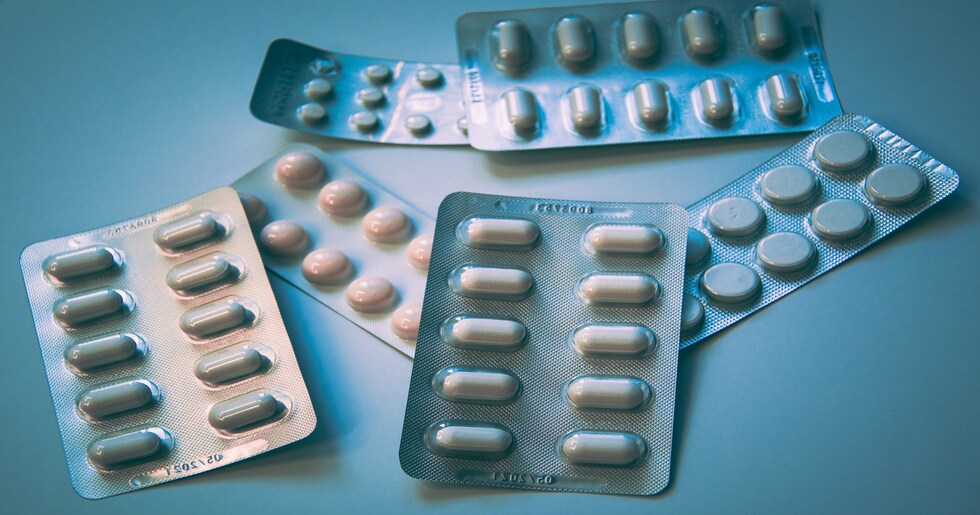The Definitive List of The Best Knee Pain Relief: Top Treatments and Solutions
Published on September 11, 2024By Laura M. (Contributor)
Contents


One of the common health complaints from people across all age groups is knee pain. Knee pain Whether it is a result of an injury from sports, wear and tear over time or medical conditions that weaken the knee joint leading to chronic symptoms – having bad knees can lead to decreased mobility, poor quality of life. Thankfully, various ways of treating knee pain exist and go from home remedies to medical practices. Discover in this ultimate guide the best pain relief solution to your knee pains depending of what needs and conditions you have.
Know the source of Knee Pain
This is because many different things can cause knee pain, and the best way to cure it (if at all possible) is treating whatever problem that triggered its onset. Some common causes include:
- Injuries: Sudden and severe knee pain can be the result of tears in ligaments (such as an ACL), meniscus injuries, or fractures.
- Osteoarthritis: refers to the degradation of joints on account of wearing down and scraping off cartilage layers thus causing swelling, stiffness and pain in these degenerated joints.
- Rheumatoid Arthritis: Autoimmune disorder causing chronic inflammation in the joints affecting most often knees.
- Tendinitis: Inflammation of the tendons that surround your knee, usually due to overuse or repetitive stress.
- Bursitis: Swelling and irritation of the small sacs (bursae) that cushion your knee joint.
- Patellofemoral Pain Syndrome: Commonly known as “runner’s knee” where the cartilage behind your kneecap gets irritated.
Knee Pain Relief Top Home Remedies
There are luckily many home remedies available which can give you relief from knee pain caused due to mild and moderate condition without needing any medical aid, The following methods have consistently worked.
1. Rest, Ice, Compression and Elevation
It is often the first line treatment for knee pain and particularly when there has been injury or an acute inflammatory flare up.
- Rest: Do not overload your knee.
- Ice: Use a cold pack with ice wrapped in towel for 15–20 minutes every few hours to help reduce inflammation.
- Compression: Wrap your knee in an elastic bandage, which can help reduce swelling and provide support.
- Elevating it: Raise your knee so that its higher than heart-level to reduce swelling.
2. Over-the-Counter Medications
Over-the-counter ibuprofen or naproxen can help ease pain and inflammation (Advil, Motrin; Aleve)
3. Hot and Cold Therapy
Knee pain can be relieved through heat and cold. Cold therapy prevents inflammation, whereas heat treatments can help soothe muscle pain and increase blood circulation.
4. Stretching and Strengthening Exercises
Exercising the muscles around the knee, especially your quadriceps and hamstrings components improve stability and help lessen pain. Swimming and cycling, or yoga make great low-impact exercise for this.
Knee Pain Medication
Medical treatments If home remedies fail to help with relief thenmedical Scalp Injections — These have been shown to regrow hair in some people and typically cost between $90–$200. Since injections are localized to the effected joints, they can be quite powerful given that pain in many cases is either originating within and/or coming from this source.
1. Physical Therapy
A physical therapist can design an individualized exercise program to address muscle imbalances around the knee, build strength in and improve flexibility of these muscles as well as correct any abnormal movement patterns that you may have. Techniques may include:
- Balance exercises: To enhance stability.
- Balancing and coordination exercises for fall prevention
- Flexibility and mobilization exercises: These can help to prevent stiffness, keep your joints moving freely.
2. Corticosteroid Injections
Corticosteroids are strong anti-inflammatory medicines that can be injected into the knee joint itself to reduce symptoms of pain and swelling. Even so, they are common treatments for more severe patients or those who have not responded to other forms of therapy.
3. Hyaluronic Acid Injections
Hyaluronic acid injections can lubricate the knee joint and improve pain and function in some patients with osteoarthritis.
4. PRP Therapies
Platelet rich plasma treatment or PRP therapy for short, is a simple injection of the concentration of platelets which are injected into your knee to help it regenerate. It can be particularly helpful for injuries like ligament tears or chronic conditions such as arthritis.
Treatment for Knee Pain with Surgery
Surgery is reserved for cases in which other treatments are not effective and the knee damage is severe. Basic Surgical Procedures
1. Arthroscopy
A minimally invasive surgery that involves making small incisions to place tiny instruments for diagnosing and treating problems inside the knee. It is often employed to approximates torn ligaments or eradicates the impaired cartilage.
2. Knee Replacement (either one or both knees)
When arthritis is advanced and damage has become significant, a knee replacement procedure may be the ideal recourse. In this procedure, the worn joint surfaces are removed and replaced by artificial components which restores function reduces pain.
3. Osteotomy
An osteotomy consists of a surgeon removing or adding a small piece of bone to re-align the knee. This can relieve pressure on the joint and delay a knee replacement.
Understanding Other Methods of Knee Pain Treatment
In addition to those conventional medical treatments, there are several alternative therapies that can help with knee pain. Different methods work for different people, but many fibromyalgia sufferers say that they find these coping strategies effective.
1. Acupuncture
Acupuncture — Acupuncture is a technique of traditional Chinese medicine that consists in placing thin needles into specific points on the body to relieve pain. Research has shown that acupuncture is effective for treating both knee pain and osteoarthritis of the knee.
2. Chiropractic Care
Knee Pain Treatment: Chiropractic adjustments can make joints align, increase their mobility and so lower the chance of severe knee pain due to misalignment or other mechanical issues as it is shown in a study.
3. Supplements
Some people use over-the-counter dietary supplements for osteoarthritis, including glucosamine and chondroitin. Still, the effectiveness of playbooks has been widely researched with conflicting results.
How to Keep Away from Knee Pain or Stay on Top of it through a New and Healthy Lifestyle?
There are easy ways you can change your lifestyle to healthier choices by doing it daily that help prevent or reduce knee pain. Some lifestyle modifications to consider include:
1. Maintain a Healthy Weight
If you have arthritis, this can hurt even more because of the extra pressure on your knees. Knees: Losing even 5 or 10 pounds can take a load off the knees, reducing pain and possibly slowing down further joint damage.
2. Wear Supportive Shoes
Your shoes play a huge factor in the way your legs are aligned and therefore really help to prevent added stress on knees. Do not wear high heels or poorly supportive shoes.
3. Stay Active
Low-impact exercise such as walking, swimming or cycling can help strengthen muscles around the knee and improve joint flexibility. Just avoid high-impact exercises such as jogging on concrete, which can aggravate knee pain.
4. Do not sit or stand for too long.
Prolong sitting or standing can cause knee to get seat easily and pain. Even a few short breaks to stretch and move around during the day can make a huge difference.
In conclusion: The knee pain relief treatment that is best for you.
When it comes to knee pain, comfort is not the same for everyone. The solution will vary mostly based on what is causing you pain and your active lifestyle but also perhaps some other health factors. Though home remedies may work for some, many others will need medical treatments or surgery. Solution is to try different ways and create your own healthy mix! Taking a proactive approach to treatment and treating the root cause of your knee pain can help you get back on your feet so that you are living life fully.
Additionally, if you have questions about where to start please consult with a healthcare professional regarding treatment plans that will work best for whatever condition is relevant.





